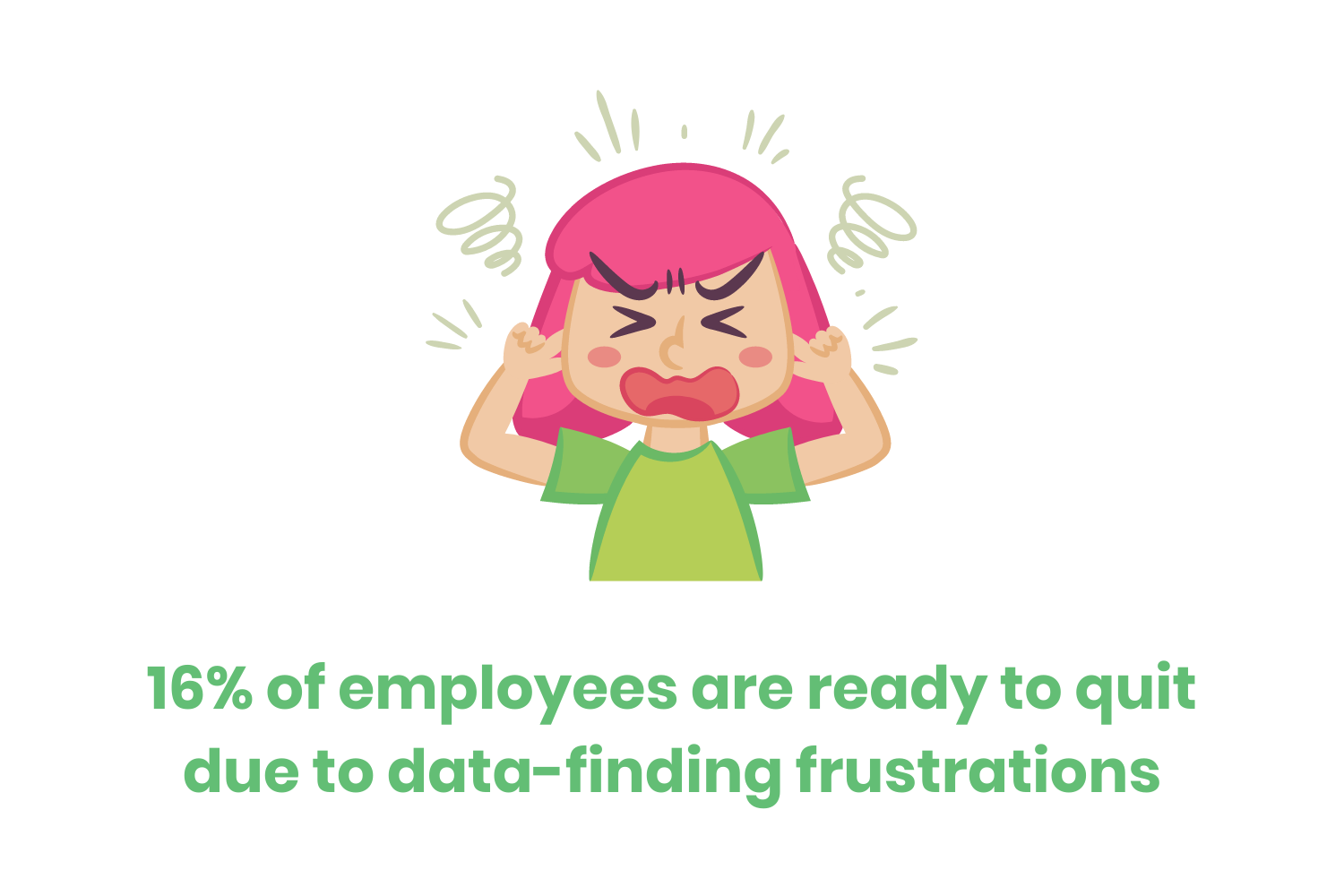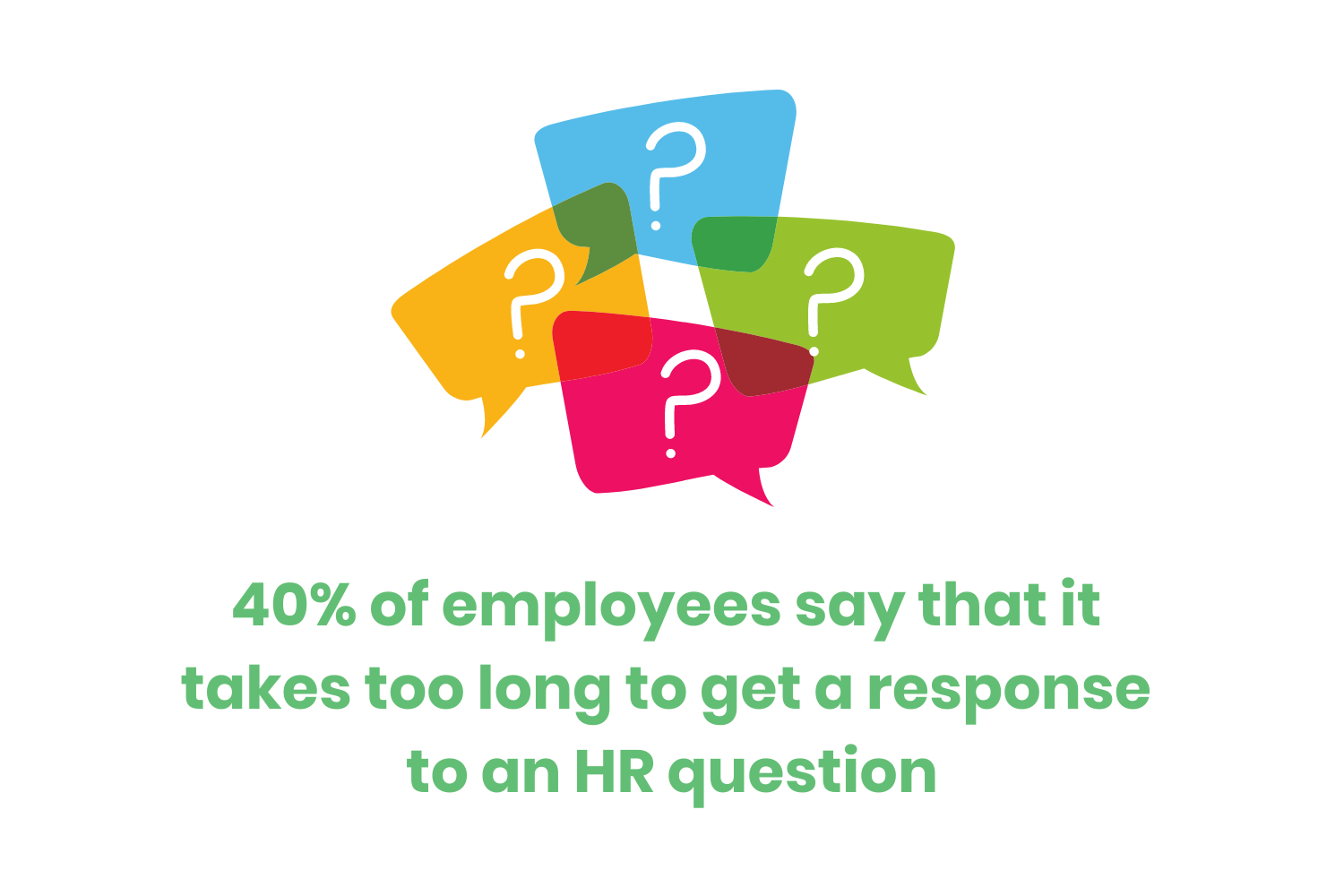The first experience that a new employee has with a company is the onboarding process. When people hear the word “onboarding,” they might imagine some of the following…
Completing paperwork
Sitting through training
Quickly meeting every coworker
Touring the workspace
Of course, each of these can be unpleasant. It’s overwhelming to get greeted with stacks of paperwork and hours of training on the first day. It may also feel embarrassing if the new hire can’t remember someone’s name or they get lost trying to navigate the maze-like office.
When new employees don’t have a pleasant onboarding experience, it can create problems that impact the company. Gallup researched the topic and found that only 12% of employees strongly agree that their organization has a great onboarding process. In other words, 88% of staff don’t believe their organization has great onboarding.
A poor first experience can give new staff a negative impression of the company right from the start. In fact, one in five new hires is unlikely to recommend an employer. This is a big problem for two reasons. The first is that referrals are a faster and less expensive way for companies to find new talent.
And the second is that these dissatisfied workers are more likely to leave. People who didn’t have a positive new hire experience were twice as likely to seek a new job soon after they started with the company.
Talent scarcity, difficulty hiring, and high turnover rates are just some of the many challenges businesses face. Therefore, it’s important to engage and support employees from the beginning.
By creating a great onboarding process, organizations can avoid these problems. They’ll also see positive results like better retention and productivity. According to research by Brandon Hall Group, great employee onboarding can improve retention by 82% and boost productivity by over 70%.
So, what does your company need to do to improve this experience? Here are eight best practices for onboarding that will give your new employees a fantastic first impression of your company.
Table of Contents
Best Practice #1 - Start the Onboarding Process Before the First Day
Best Practice #2 - Don’t Overload With Information
Best Practice #3 - Fun, Creative, and Awesome Welcome Ideas
Best Practice #4 - Provide Opportunities to Connect with Teammates
Best Practice #5 - Conduct Frequent Check-Ins
Best Practice #6 - Introduce and Demonstrate Company Values
Best Practice #7 - Involve Senior Leadership
Best Practice #1 - Start the Onboarding Process Before the First Day
Many companies make the mistake of waiting to start onboarding until the individual’s first day. But from the moment someone accepts their job offer, the process should begin. After all, sometimes there’s a waiting period between the person accepting the offer and starting the job. This could be due to reasons such as…
Finishing out their previous job after submitting their two-week notice
Needing time to relocate for the position
Waiting on your current team member’s contract to finish so the position is open
This should go without saying, but communicate how excited you are for them to join your team. You can also take advantage of this in-between period by having them complete required paperwork or training courses. That way, they don’t need to do this tedious work on their first day. They’ll instead be able to jump right into getting to know the team and learning your company processes.
Provide a checklist for them during their preboarding. This includes all the steps they need to complete before their first day so that they show up prepared.
There’s also a checklist of tasks that your company needs to complete during preboarding. For example, set up accounts for their email and any technology systems that they’ll be using at work. Doing this beforehand makes it possible for them to start using their accounts right when they arrive (after they create their own password, of course).
Best Practice #2 - Don't Overload With Information
There’s so much information involved with starting a new job. But all of this can be overwhelming. Handing over a laundry list of training to complete or PDFs to read (on top of their first-day nerves) is a sure-fire way to stress someone out.
This is another reason to provide some information and tasks before their first day. 58% of organizations say their onboarding program focuses on processes and paperwork. While these are necessary, they can be stressful.
A study conducted by Pew Research Center discovered that 56% of respondents felt high levels of stress caused by information gathering processes. 16% of employees are ready to quit due to data-finding frustrations. In other words, consuming too much information at one time leads to stress, fatigue, and poor decision-making.
Since you don’t want to overload them, breaking up the information into phases will help. Pace their learning throughout the first few weeks. You can give them training on a week-by-week basis depending on what they need to know.
You also need to cut out excessive unnecessary information. Results for a 2021 workplace relevance report revealed that 41% of all details provided to employees are irrelevant to their job. This wastes time that you could use for engaging onboarding activities.
Best Practice #3 - Fun, Creative, and Awesome Welcome Ideas
Sending a new hire the list of company policies and paperwork is necessary, but it can also be stressful. To balance out this anxiety, your company should implement exciting welcome activities.
For starters, sending a welcome email can go a long way. These give the employee a glimpse of your company culture and ease their nerves by going over everything they should know for their first day. Some things to include would be…
The start day and time
Company address with any directional details so they don’t get lost (for example, “Take the elevator to floor 3 to get to our suite”)
What to bring on the first day (especially any of the forms that were part of their preboarding to-do list)
Dress code (even if it's casual so they don't show up overdressed and feel out of place)
First-day agenda so that they know what to expect
Informational documents to review such as the employee handbook or company policies
Within these emails, you can even include a welcome video from your team. This makes the individual feel like they’re part of the company already and they’ll also recognize some faces on their first day. I’ll touch on the importance of this more in the next section.
Another great way to make a positive impression is through a welcome kit. According to Inspire, these are the best way to transform the first day into a memorable one. But what should you put in these kits?
Common items that businesses include are t-shirts, water bottles, notebooks, or pens that match the company’s brand. DDB San Francisco even welcomes its staff with fresh flowers. Because employees wouldn’t expect this, it leaves a lasting impression.
Best Practice #4 - Provide Opportunities to Connect with Teammates
Social interactions at work affect employee satisfaction. It’s positive to make these connections, but meeting too many people at once can be intimidating. How will someone new remember everyone?
Gradually meeting these people helps make it less stressful. The most important team members, such as managers and those in the same department, should introduce themselves first.
You can include a chart with their pictures in the welcome email that you send. These people should even send their own welcome email to make it more personable. This way, the new employee knows of people they can approach for help.
If you want to take this a step further, you could also host an off-site casual event like coffee or lunch before the first day. That way, the employee actually meets the team in a relaxed environment. People at this meetup should include the hiring manager with who the person already communicated, as well as those on the same department team.
Other strategies include…
Using a mentor or buddy system with an existing team member who can guide them during onboarding
Hosting a team lunch or team-building event on or after the first day
Sharing a welcome video before the first day so they recognize faces
Scheduling one-on-one meetings to check-in, especially for remote employees
Best Practice #5 - Conduct Frequent Check-Ins
Speaking of one-on-one meetings, include these in your best practices for onboarding. Scheduling weekly check-ins between the new employee and their supervisor can improve how they transition into their role.
You can use these check-ins to...
Discuss the onboarding progress
Remind new hires of important deadlines, such as training courses
Identify if they need help with any processes or responsibilities
Give them advice on managing their workload
Discuss expectations about performance, deliverables, and responsibilities
For instance, set the expectation if they need to contact a certain number of prospects each month
Create short-term and long-term goals
These meetings might sound intimidating to someone new to the job. You don’t want them to view these as progress reports right out of the gate. Explain to them that these are actually a resource to help them succeed.
To get them into the groove, set timelines for any tasks they need to complete before these check-ins. This gives you both something to discuss during the first meeting. Once an employee gets the hang of their responsibilities, you can transition to monthly check-ins.
Best Practice #6 - Introduce and Demonstrate Company Values
Company values are one of the many factors that lead to someone’s choice to work for a specific business. These influence the company’s culture and motive employees in their work. Because of this, it’s important to introduce these values throughout the onboarding process.
It’s one thing to type out these values on a slideshow that you present to the new staff member. But it’s another to hear about them from peers and senior leaders.
Since superiors set the precedent for these values at the company, they’re one of the best people to explain what these are. Of course, it can be difficult for them to make time on someone’s first day to present these values. Instead, your company can create a video with top executives explaining them.
These explanations are useful for introducing the principles that the business runs on. But staff should also know about examples that demonstrate them. This is where peers come in.
Other team members can provide anecdotes of their coworkers that exemplify these values in action. They can share stories about their time with the company to truly give the new hire a sense of how the business and team operate.
Best Practice #7 - Involve Senior Leadership
In the last section, I mentioned how you can use top leaders and executives to explain company values. Involving superiors is another example of best practices for onboarding. Because they’re so busy, new hires won’t get the chance to interact with them much. But they should know the people who they’re working for.
There are many ways you can involve these leaders during someone’s first week at work, such as by…
Giving a tour of the building and facilities
Taking the employee out to lunch or for coffee
Explaining company history
You could turn this into a trivia game to make it more engaging
Providing one of the required training sessions
This kills two birds with one stone, and people are more likely to pay attention if the topic is important enough for an executive to teach
It’s not only the responsibility of direct supervisors and Human Resources to onboard new staff. Employers should also get to know who works for them. It makes individuals feel important if their superiors make time for their onboarding activities during the first week. This demonstrates those company values that seniors want for their business.
Best Practice #8 - Learning on the Job
Sometimes the best way to learn is by doing. Onboarding could consist of endless lectures, but this wouldn’t be effective in training someone.
Going through the tasks together helps the new worker learn on the job. They’ll be able to ask questions in real-time as they go through these processes. This collaboration makes it easier for them to get answers quickly. And the faster they can get answers, the more efficient they become in their role.
Unfortunately, half of the employees in the US say that it takes too long for their technical issues to get resolved at work. 40% say that it also takes too long to get a response from HR. This would delay their learning so that they can do their job effectively.
But if they learn as they go through processes, they can get help simultaneously. A good way to tackle this is by using microlearning. These mini-courses break down information into smaller segments which are easier to retain than hourlong training videos. That way, staff can start implementing what they know immediately and identify anything they don’t understand.
Another way to encourage collaborative learning is by storing all training material in a central location. For instance, you can add informational documents to a shared folder in Google Drive if your team uses Google Workspace. The shared locations should be easily accessible so employees can quickly search for the data they need.
Conclusion
Even though you might think of paperwork and training when you hear the word onboarding, it’s more than that. The practices that you implement during this process can make or break how someone feels about working for your organization.
Companies need to strategize how to create a structured process that effectively trains and engages their staff. There are simple steps anyone can use to make new hires feel valued while also onboarding them efficiently.
If an employee’s first impression of your organization is positive, their productivity increases month to month. Data shows that new hires have a 25% productivity rate in their first month. This increases to 75% by their third month on the job. With a great onboarding process, this productivity consistently increases.
Each of these eight best practices for onboarding can improve staff experience. They’ll have the information they need while reducing first-day nerves. That way, they feel prepared to start their new career, have the resources to be successful, and feel excited about being part of the team.












